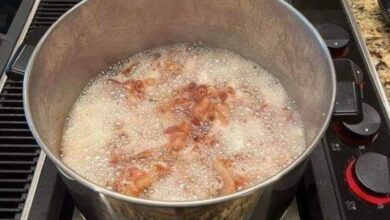BEST SCALLOPED POTATOES: A CREAMY AND IRRESISTIBLE CLASSIC

Scalloped potatoes are a timeless and comforting dish that combines tender potatoes, velvety cream, and layers of cheesy goodness. This classic recipe has been a staple on dining tables for generations, providing a rich and satisfying side dish that pairs perfectly with a variety of main courses. In this article, we will dive into the world of scalloped potatoes, exploring the recipe, and tips for success, and answering some frequently asked questions to help you master this creamy and irresistible classic.
ADVERTISEMENT
Ingredients:
| Ingredient | Quantity |
|---|---|
| 4-5 large russet potatoes, peeled and thinly sliced | – |
| 2 cups heavy cream | – |
| 1 cup whole milk | – |
| 2 cloves garlic, minced | – |
| 1 teaspoon dried thyme | – |
| 1 teaspoon salt | – |
| 1/2 teaspoon black pepper | – |
| 2 cups shredded cheddar cheese | – |
| 1/2 cup grated Parmesan cheese | – |
| Fresh thyme leaves, for garnish | – |
Instructions:
- Preheat your oven to 375°F (190°C). Grease a 9×13-inch baking dish.
- In a saucepan, combine the heavy cream, whole milk, minced garlic, dried thyme, salt, and black pepper. Heat the mixture over medium heat until it begins to simmer. Remove from heat and set aside.
- Arrange a layer of sliced potatoes in the greased baking dish, slightly overlapping them. Pour a portion of the cream mixture over the potatoes, ensuring they are fully coated. Sprinkle a layer of shredded cheddar cheese on top.
- Repeat the layering process with the remaining potatoes, cream mixture, and cheddar cheese until all the ingredients are used, ending with a layer of cheese on top.
- Cover the baking dish with aluminum foil and bake in the preheated oven for 40 minutes.
- After 40 minutes, remove the foil and sprinkle the grated Parmesan cheese over the top layer. Return the dish to the oven and bake uncovered for an additional 20-25 minutes or until the potatoes are tender, and the cheese is golden and bubbly.
- Once cooked, remove the dish from the oven and let it rest for a few minutes. Garnish with fresh thyme leaves before serving.




